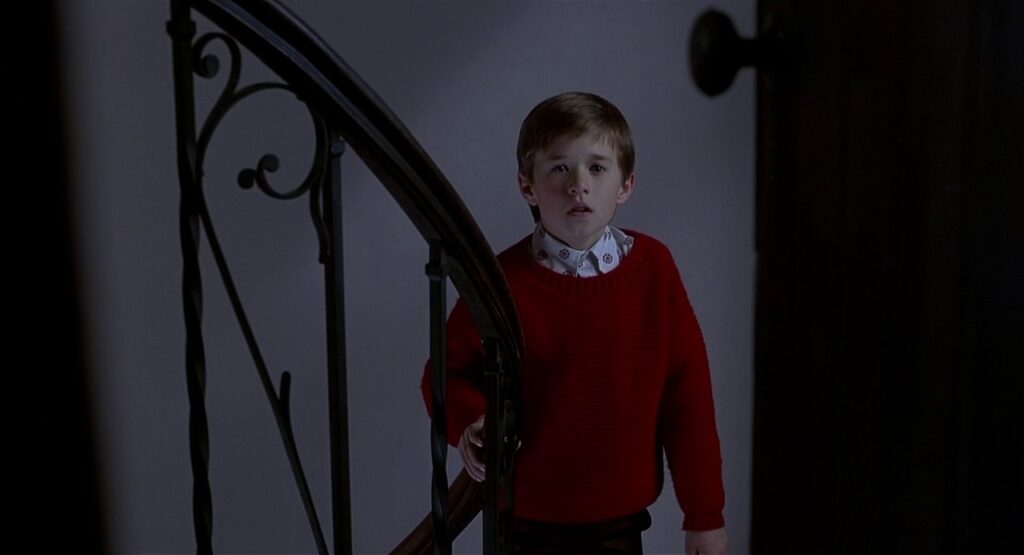Picking a perspective is like choosing your weapon before a gladiator match; it limits and defines your style of approach. In this article, we’ll discuss the third person limited point of view with some examples, and at the end I will give you a story weapon that will help you find the best P.O.V. for your story.
Previously, we discussed third person omniscient—where the narrator darts and dashes between perspectives like a plot-focused deity—and this time we’ll tighten the lens a bit.
Third person limited point of view sticks closely to one character’s inner world, creating suspense and emotional depth by revealing only what that character knows. It’s great for focused storytelling, and if unsure, just start writing — the right POV will often emerge naturally.
What is third person limited POV?
When writing in third person limited, the focus tends to be on a single character’s perspective.
This isn’t first person perspective, told with the voice of “I,” or second person, told to “you.” We refer to the third person in the room. If you and I were playing cards with Harry Potter, we’d refer to him the same way J.K. Rowling does.
“The third person narrator, instead of being omniscient, is like a constantly running surveillance tape.”
– Andrew Vachss
Examples of third person perspectives
To get a sense of how third person limited differs from third person omniscient, let’s take the same scenario and look at an example from both perspectives.
Example 1: Third person omniscient
Let’s say, for instance, we’re in a horror story and the killer is in the house with the protagonist.
Samantha remembered her training: breathe quietly and walk close to the wall to prevent the floorboards from creaking. She slowly crossed the living room, only two doors away from the garage and the outside world. On the other end of the hall, the killer did the same. Knife in hand, eager to finish the contract, the killer took a second to pray. After all, a kill isn’t a kill if it isn’t consecrated to Kali, the goddess of death. By the time the prayer finished, Samantha entered the garage and, with a swift kick, slammed the door open. “I made it!” She thought.

Example 2: Third person limited
Let’s try this again, but instead focusing on (for novelty’s sake) the killer’s perspective.
There was only silence and the call of the blade. One last target and the contract would be complete. Finally, finally, the contract would close. The killer took a second to pray. After all, a kill isn’t a kill if it isn’t consecrated to Kali, the goddess of death. The killer chose the short version of the prayer—Kali would understand—and prepared to burst into the living room. The entrance has to be dramatic, of course. Just then, a slam echoed across the house and the killer’s heightened senses detected the smell of trees. Samantha must have escaped.
Tonally and in terms of the actual events of the plot, these passages are nearly identical. The actual differences lie in the fact that, in the latter paragraph, the reader acts only as an observer of the killer’s world. When that world crosses into Samantha’s, we should only get to see the outside of her actions, not her internal processing. In the former paragraph, we’re treated to both. To the reader, there’s a different relationship with the characters. We’re automatically, whether we’d like to be or not, more sympathetic to the perspective of the killer in the second example. We haven’t been given the choice. We also know less; Samantha’s escape comes as more of a surprise when we don’t know she’s planning to do it.
Pros & Cons of third person limited POV
Advantages
In a story like the above example, having less information can potentially be helpful. There’s more suspense when we’re not privy to everyone’s thoughts and feelings.
We also have some clarity about the “sides” of the plot. We know who our protagonist is and there isn’t much deviation from that. In third person omniscient, we might float around a big setting with multiple main characters.
Disadvantages
We might lose some of the intimacy with the main character when compared to the first person perspective. After all, if we’ll be experiencing the world with a character, why not see it through their eyes?
The third person limited perspective also tends to require a more detached or dry narrative style, as there isn’t a character directly narrating it. With first person or third person omniscient, we get some color commentary as we go. There’s even the chance of an unreliable narrator, which can add an interesting layer to the story.
Should you use third person limited POV?
When deciding between the different perspectives, there are a few things to consider.
What’s the tone of your story?
If it’s the type of story where suspense is a necessary element for the big moments to land, third person limited might offer you some support. We get to learn things as the character does, with a bit more prose than a first person story. We’re left in the dark or lied to when the character is being misled, and the reveal of the truth should hit us as hard as it hits your main character.
This is also an interesting opportunity to invert expectations. How often do you read a horror or a mystery from the perspective of the murderer or the source of the mystery included? That might give your readers a reason to pick your book off the shelves.

Which POV works best with your writing style?
Try to consider what you enjoy writing. If you love florid prose and imagery that sets the scene of the story, third person limited offers you plenty of room to do that. The inner world of the character we follow is, in a way, just another element of the nature in which the story takes place.
In first person, we’re more focused on the character’s inner life than we are on the outer world. Even in third person omniscient, because we’re considering the inner thoughts of multiple characters, there might be less room for prose.
In the third person limited perspective, it’s just the outside world of the story and the inside world of one person (or goblin, fairy, demon, etc).
Balancing intimacy and distance
Ask yourself what kind of relationship you’d like your audience to have with the main characters. When it comes to a story like Harry Potter, we become attached to Harry’s perspective and we need him alive to keep moving forward. That’s not true for third person omniscient stories. Harry’s friends are our friends and his enemies are our enemies; there’s less moral flexibility or empathy for the antagonists. This might work for your story or work against it.
In some cases, when the events of the story are particularly painful, it can help for the audience to have some distance from the consciousness of the main character. In other cases, like a rich romance, we might need to know the tune to which the character’s heart beats if we’re going to be swept off our feet.
Your Story Weapon: Start Writing
The truth is, if you listen closely, your story will tell you what perspective to choose. Building a story is an iterative process, where we move from the general to the specific. In imagining the world of your story, you often begin with a character or a premise, and as you begin to explore, a narrative emerges. This is all done prior to writing your first draft. As you begin to write your first draft, you will often naturally discover the perspective that most dynamically expresses your story.
But if you don’t, here is your story weapon.
Ready?
Just. Start. Writing.
Seriously. And be willing to switch perspectives as you write. Remember, this is your first draft, and the focus should simply be on getting the story down. Your focus should not be on the quality of your prose. Don’t worry about grammar, spelling, syntax or perspective. As you write, you will naturally move in the direction of finding the voice that best supports the story you are telling. It could be third person limited, omniscient, first person — you’ll have time to explore the possibilities.
Find out more in one of my workshops – The 90-Day Novel, The 90-Day Memoir, Story Day






